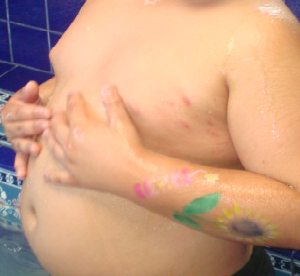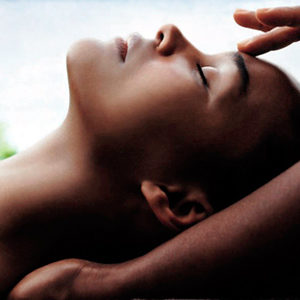Throughout the world, all the ancient teachings agree — any Kahuna, Shamanistic, or magical discipline requires that the Kahuna be able to enter an altered state rapidly and at will. But what kind of an altered state? The word Kahu-na will give us a clue. Na means “quiet, calm, centered.” So some kind of ability to enter a calm centered state is what is necessary. But that in itself is not really quite enough in Huna.
You see, in actual practice, a calm, centered state is just the first step. Ultimately, we must reveal the finer planes of creation or levels of the creation, unseen to the normal eye must be revealed directly to the Kahuna. To achieve this, many cultures used drugs. Native Americans in dry southern climates used peyote. Rituals, such as rattling or drumming, were also used to induce an altered state.
But, to be honest, Hawaii didn’t really have an effective substance for achieving altered states. Awa (kavakava) is only mildly hallucinogenic. (Personally, we find this rather refreshing to find that in Huna we do not need to take massive amounts of mind-altering drugs as did some of our counterparts in other cultures because excessive drug use can lock you into the lower planes, and thus de-evolve the user.) So in Hawaii, other means were found to evolve the consciousness.
In every system, one of the first things a Kahuna learns is the ability to access altered states rapidly, and it is having this ability that will often determine success. The first step in cultivating the ability to rapidly access altered states rapidly is to learn a form of active meditation — Hakalau!
THE ACTIVE MEDITATION OF THE KAHUNA
One meaning of Hakalau is, “To stare at as in meditation and to allow to spread out.” If you’ve never tried it before, right now, this technique can be a real eye-opener. Do it.
- Ho’ohaka: Just pick a spot on the wall to look at, preferably above eye level, so that your field of vision seems to bump up against your eyebrows, but the eyes are not so high so as to cut off the field of vision.
- Kuu: “To let go.” As you stare at this spot, just let your mind go loose, and focus all of your attention on the spot
- Lau: “To spread out.” Notice that within a matter of moments, your vision begins to spread out, and you see more in the peripheral than you do in the central part of your vision.
- Hakalau: Now, pay attention to the peripheral. In fact, pay more attention to the peripheral than to the central part of your vision.
- Ho’okohi: Stay in this state for as long as you can. Notice how it feels. Notice the ecstatic feelings that begin to come to you as you continue the state.

(Notice that this description is almost the same as Patanjali’s description in the Yoga Sutras of Dharana, Dhyana, and Samadhi leading to Samyama.)
Hakalau is the means, then, in the Hawaiian system for entering a rapid trance state at will. In our Huna Intensives given in Hawaii, we suggest to the Haumana (students) that they use this technique inside and outside of class — all the time — until it becomes automatic. This is the state we are in as we go from place to place, walking, cycling, riding in a car, etc. And as you do it more and more, you will also find that it is impossible to hold a negative state in consciousness when you are in peripheral vision. Hakalau is also why some Shamans won’t actually make eye contact with you, because it could interfere with the state. (Truthfully, if eye contact can interfere with your state then you need more practice with a qualified guide.)
The ability to enter a trance state rapidly, and at will is deepened by sitting in meditation and deepening the experience. The technique is practiced with the eyes closed and adds some additional techniques to Hakalau.
To experience Hi’olani — the sitting meditation of the Kahuna Hi’olani
THE SITTING MEDITATION OF THE HAWAIIAN KAHUNA
The Kahuna, Kapihe was quoted in 1850, as saying,
“E iho ana o luna.
E pii ana o lalo.
E hui ana na moku…” — Kapihe, 1850
We believe that this translates as, “Bring down that which is above by means of the light. To ascend, take from darkness into light all that which is below (in the dark areas of the unconscious mind) by means of light. This will integrate all the islands (all the parts inside you), transforming the spiritual energy as it flows from the source and giving you peace.”
Another ancient chant gives a more specific technique:
“Kaa akau, kaa hema.
Ku makani hai ka lani.
Hekili kaakaa i ka lani.”
“Roll the eyes up to the right, roll the eyes up to the left.
Lift the eyes straight up to open up the heavens.
Let flow the fine rain, roll the eyes up to stare at the heavens.”
Here are the specific steps to Hi’olani (or meditation):
- O ku’u: Find a comfortable place to sit — in a chair or on the ground will do. Darken the room, or cover the eyes so that no external light gets in. (This is important, at least the first time you do it.)
- Ha: If you wish, begin by doing 5 to 15 minutes of Ha breathing as described above.
- Ka’a: Roll the eyes up and to the right, then up and to the left, and then straight up to the heavens. Focus the eyes without strain, as if looking up at the sky, on the space between the eyebrows. (You can roll the eyes up even more if it is comfortable.) Remember the feeling of Hakalau, and take that into meditation with you.
- Kala: E iho ana o luna. As you look up to the space between the eyebrows, focus on the light. Pay attention to the light, let the light come to you, welcome the light. Watch the light. (If as you begin, you do not see the light easily, just press lightly on your eyeballs pushing them up and inward). Then let go, and watch the light.)
- Kuu: “To let go.” Now, just let go and watch the light. If there are other thoughts, and the light is still there, that’s OK. If you’ve forgotten to pay attention to the light, gently bring your attention back to the light.
- No’o: At the same time, meditation; concentration on the light. No’ono’o: Thought, reflection, thinking, meditation — to think, reflect, meditate, concentrate on, and consider the light.
This technique is also similar to a description of meditation on the light in Patanjali’s Yoga Sutras: “From meditation on the light in the head, comes the knowledge of things which are subtle, hidden or far distant.” Patanjali III, 24. “Upon the cerebral light, the vision of the perfected ones.” Patanjali III, 31
This is the first technique for meditating on the light. It is well worth the investment of time spent in doing this process, because not only does it expand your consciousness permanently, but it also cultivates in the nervous system the ability to go into an altered state rapidly and at will. It trains you to be able to enter the Kahuna State at will.
THE PHILOSOPHY OF MEDITATION:
It is the inner light and the inner light alone that can ultimately take us by the hand, and deliver us to the Great Light. This is where we came from, and ultimately where we will return. Truly it is where we desire to be now. Reaching the source of all light in and of itself is a supreme achievement, worthy of a lifetime of meditation. To bring an experience like this to our conscious awareness, so that it does not pass us by like a flash of lightning, it is necessary that we are prepared for its dawning. Ho’o puka e ka la, ma ka hikina!
Learning how to breathe in preparation for meditation is important — ha breathing.
THE TEACHING OF HA-WAI-I: (This legend is not necessarily verifiable, but it is fun!)
When the first Haole (slang for Caucasian), no doubt one of Captain Cook’s crew, arrived at the Island of Hawai’i, he came ashore, and asked the first Hawaiian he saw, “What’s the name of this place? Where do you live?” The Hawaiian answered, “Hawai’i.”
Then the sailor went to another area of the Big Island and asked the next Hawaiian he saw, “Where do you live?” The second Hawaiian said, “Hawai’i.” And then a third, with the same answer, so the island was named “Hawai’i.” What each Hawaiian meant was, “I live in the supreme Mana that rides on the life’s breath.”
When the sailor visited the next island, he asked the first Hawaiian he saw, “Where do you live?” This Hawaiian said, “Hawai’i.” And then another island and another, and still the same answer, “Hawai’i.” So Captain Cook named all the Islands, “Hawai’i.”
But Hawai’i isn’t just a place in the middle of the Pacific, it’s a place inside you — a place that, wherever you go in the world it is still inside you. You see, what the Hawaiian was saying was, “I live in:
Ha: meaning breath, or breath of life
Wai: meaning water, but also a code word for Mana or life force, and
‘I: meaning supreme

But Hawai’i is not just in the Hawaiian Islands, you also carry it with you, and so you can connect with your Hawai’i — the supreme life’s force that rides on the breath, any time, anywhere.
Just stop and take a full breath in through the nose, and out through the mouth with the sound, “Ha.” The out-breath is whispered loudly and is twice as long as the in-breath.
So if you’re in traffic, bumper to bumper, and you have to be somewhere, and you’re about to rip the bumper off the car with your bare hands: Just stop and take a full breath in through the nose, and out through the mouth with the sound, “Ha,” and reconnect with the Hawai’i in you.
If you’ve had a rough day at the office and you’re tired, really tired, but it’s only three: Don’t take that 14th cup of coffee, forget about it. Just stop and take a full breath in through the nose, and out through the mouth with the sound, “Ha,” and reconnect with the Hawai’i in you.
If your kids are raising the roof, and your dog just mangled your 120 dollar Reeboks, and the cat just fur-balled in your bed, and you are about to yell and throw all of them out: Just stop and take a full breath in through the nose, and out through the mouth with the sound, “Ha,” and reconnect with the Hawai’i in you.
You’re about to go in to see your boss, and you hope he’s in a good mood, ’cause the last time he wasn’t and that wasn’t fun, and you’re really anxious: Just stop and take a full breath in through the nose, and out through the mouth with the sound, “Ha,” and reconnect with the Hawai’i in you.
Remember — anywhere, anytime — you can reconnect with the supreme Mana that rides on your life’s breath — the Hawai’i inside you. Just stop and take a full breath in through the nose, and out through the mouth with the sound, “Ha,” and reconnect with the Hawai’i in you. Anyone can — anytime, anywhere. So wherever you go you can be in the flow of the supreme Mana that rides on the life’s breath.
In the early 1800s, when the first white visitors to Hawai’i arrived, the Hawaiians watched them carefully especially when they spoke or prayed. Soon the Hawaiians noticed something odd about the missionaries. The Hawaiians had confirmed their suspicions — the newcomers didn’t breathe, at least not the way the Hawaiians did. The Hawaiians were miffed. Before any Hawaiian would begin to chant, or even to make a pronouncement, they always breathed and meditated, but the new arrivals didn’t, so they were called Haole. Ha, meaning “breath,” and Ole, meaning “lacking.”
So let’s not be Haole, at least not in the true meaning. As you’re reading now, let’s breathe together, doing the Ha breath for 5 minutes. Why not stop and do that now? Just take a deep breath in through the nose, filling your lungs completely. Then exhale through the mouth, loudly whispering the word “Haaaa,” and exhaling completely. Continue for 5 minutes — put on some nice music if you wish or just sit quietly. (By the way, if you begin to hyperventilate or feel light-headed at any time during any breathing technique, just stop and wait for it to pass.)
Chanting is also important for expanding consciousness and awakening the neurology.
WHY WE CHANT: Once a Kahuna who had been a student of Daddy Bray’s, asked, “Why do you chant those old chants, why don’t you let them die?” “Because they won’t die,” we replied. Even today they still call us to be chanted. We know that Daddy Bray himself didn’t feel that way about chanting. He chanted nearly every time he taught Huna, and he did think it was important. So why do we chant?
We chant because chanting opens up the heart, and makes it swell and expand. We chant because at the deepest level of the meaning of the chant there is a vibration that corresponds to the meaning, and chanting opens up the neurology to that vibration.
Once, someone asked Swami Muktananda (an Indian swami, and master teacher of meditation) why he chanted and taught chanting, and he said, “We chant because, without the chant, the heart of a yogi becomes as dry as a leaf in the fall, and as brittle, too.”
The theory of chanting in both the Hawaiian system and the Sanskrit system (in India) says that the sounds being chanted, the tonal patterns and the frequency of the vibration of the sounds, invoke in the neurology of the listener and also the chanter, the deepest spiritual essence of what is being spoken of in the chant. Remember listening to a song, and notice that each word has a certain vibration in addition to the tune. In a Hawaiian chant, the vibration of the word has the same frequency as what is being spoken of at the deepest level of the chant. The ancient languages including Hawaiian, Greek, Latin, Hebrew have this effect. English does not. If you are Catholic, what was the difference between the Mass in Latin and the Mass in English? Do you remember the difference? Even if you do not remember, statistics show that attendance of the Sunday Mass dropped significantly when the Latin was eliminated.
English, on the other hand, is a modern language, and so does not carry the same vibrations at its deeper level of sound as do the ancient languages.
We have 10 to 10 to the 11th possible neurological connections inside our body, according to Dr. Paul Goodwin, Neurophysicist, at Alaska Pacific University. We only use 10-15% of them, he says. But what do you think the rest of the neurology is for? To be developed, we believe. Chanting does that, making new neurological connections that allow the experience of subtler levels of creation and vibration.
That’s why the tradition of Huna includes chanting. For example, we include chanting because by hearing the chants, every single pattern of sounds connects a certain set of neurology inside. So, simply hearing the sounds of the chants establishes certain neurological connections that you may have had before but do not currently have. If you have them already, then it strengthens those neurological connections.
Simply put, we chant to expand our neurology and attune it to spirit, and to expand our consciousness.
THE DEEPER MEANING: Now, what do we mean by “deeper meaning?” The English language has 22 consonants and 7 vowels. The Hawaiian Language has 7 consonants (plus the glottal stop which is counted as a consonant by some linguists) — h, k(t), l, m, n, p, w, plus the 5 vowels — a, e, i, o, u. When you look at the structure of the Hawaiian language, from what you have seen here, you begin to notice that there are very few consonants. In fact, seven or eight consonants and all the vowels make the language extremely simple. But the other thing about the language being that simple is that it’s necessary for every single word to have a number of different meanings. Each word will need to have more meanings than English, some up to seven or eight meanings.
Each word in Hawaiian has to do 3 or more times the work to produce the same meanings in Hawaiian that it does in English. This may have made Hawaiian the first phonologically ambiguous language!
Let’s look at a part of one of the chants:
E Iho ana o Luna
E Pii ana o lalo
E Hui ana na moku
E Ku ana ka paia
This was originally translated as:
This: was originally translated as
“That which is above shall come down,
that which is below shall be raised up.
The islands shall be united,
and the walls shall stand upright.”
It was taken to be a prediction of King Kamehameha’s uniting of all the islands around the late 1800s, as predicted by the Kahuna Kapihe of Kona, in 1850.
But if you look at it with a different Kaona (a key to the context for translation of the chant), and you notice that “E Hui ana na moku” if taken as being inside the self could also mean to “make one of all the islands inside the self,” then you get a substantially different translation:
“Bring down that which is above by means of the light.
To ascend take from darkness into light that which is below by means of light.”
This will transform the spiritual energy as it flows from the source and integrates all the islands (inside you), giving peace.
This will affect you profoundly, and change your life bringing illumination, and you will feel the delightful supreme fire.”
What a difference! It is not surprising, however, that when the missionaries arrived, the Kahuna, who was MUCH more spiritually evolved than the missionaries were, hid the truth (about the ancient teachings) in the simple legends the missionaries wrote down for posterity. We believe that every single Hawaiian legend that predates 1850, probably has hidden inside it, the ancient teachings. (Further research needs to be done on the Fornander Collection, for example.)
Discovering this is one of our great passions, and we are still in the process of going back and rediscovering the ancient hidden teachings. The reason why we like Huna is that it was relatively untouched by Western hands until the first missionaries arrived in Hawaii in 1820, and when the original teachings were hidden, they were well hidden. So, much of the teaching of Huna is relatively well preserved. Unlike other disciplines in North America and the world, the Hawaiians were only subjected to persecution of the knowledge for a short period of time.
When the missionary arrived in Hawaii, he looked at the Hawaiians who were dressed in fewer clothes and decided that he (the missionary) was superior. They came from Boston, wearing tall hats, dark coats, long woolen trousers, and long underwear because that is the way one dressed. They looked at the Hawaiians and said, “Look at how they dress. What could they know?” So, the newcomers outlawed the practice of Huna, and that, in a country that prides itself on the freedom of religion and freedom of speech.
It may also be that the Kahuna did not just hide the truth; it may just be that the missionaries were not capable of understanding the truth. There are, however, numerous stories of the missionaries’ inability to comprehend. Leinani Melville [Melville, 1969] says that the Kahuna refused to share any more information with the missionaries when the later refused to acknowledge that the ancestors of the Hawaiians could have come from Na Lani (the heavens). If they could not even get that right, how could they be trusted with more sacred things which were beyond their comprehension?
It is fortunate that the ancient teachings of Hawaii were only suppressed for seven generations, instead of twenty or thirty generations as in the other parts of the world. So, one job that still needs to be done is to retranslate more of the ancient chants, to bring back the ancient meanings.
If you would like to learn more about the process of chanting, keep reading.
LEARNING TO CHANT
PRACTICE
Let’s get started chanting. If this is the first time you have ever chanted, you may want to start with the vowels. In Hawaiian, here’s how each vowel sounds:
A = ah (as in “ha, ha”)
E = eh (as in “check”)
I = ee (as in “team”)
O = oh (as in “home”)
U = oo (as in “who”)
Even when vowels are doubled up, such as in the Hawaiian, “oo” it is still, “oh-oh,” and not “oo.” (We’re told the vowels are the same as they are in Spanish.)
So, to start, you may want to chant the vowels, as each beginning chanting student does. Stand up, take a deep breath, and chant “aaaaaaaaaaa” for the entire breath, and then continue with each of the vowels. Repeat. Continue for five minutes.
Notice the feelings inside as you chant. What’s happening in there? Pay attention to other parts of your body. How are they affected? Each vowel activates a different part of your neurology, so notice what’s going on as you chant.
Now, let’s move on to learning a Hawaiian chant. After you know the vowels, the whole word is easy. This chant is called Ho’opuka E-ka-la Ma Kahikina.
First, read English, so you have an idea of the purpose and meaning of the chant.

Ho’opuka E-ka-la Ma Kahikina
(A chant to invoke the dawning of enlightenment)
“Rise upward” (Repeated 3 times) “Go into the sun, make a hole in the sunlight and find the light behind the light. Like the sun rising in the East, let the source of all light come and dawn on me. From your foundation, lift up; move from your origin. By (means of) breathing comes to me. Take me by force loudly, as Hi’iaka (a goddess of healing). Tapo, Laka (a goddess of light, and the Hula) come to me, drift upon me, increase, spread (as I hear this chant). Bring me the means of life. Creeping along like the lava, come to me. Take me by force loudly! By means of release, come and be with me. Cause meditation to come to me
by means of this sacred ceremony belonging only to the ali’i (royalty).”By means of the (spiritual) food, we acquire the means of life forever and permanent wisdom.”
A chant in honor of the (means of) the dawning of enlightenment.”
Ho’opuka E-Ka-La Ma Ka Hikina
Ai, Ai, Ai.
Ho’opuka e-ka-la ma ka hikina e
Kahua ka’i hele no tumutahi
Ha’a mai na’i wa me Hi’iaka
Tapo Laka ika ulu wehiwehi
Nee mai na’i wa ma ku’u alo
Ho’i no’o e te tapu me na’ali’i e
E ola makou a mau loa lae
Eala, eala, ea. A ie ilei ie ie ie.
He inoa no ma ka hiking
Begin by saying the words out loud, then add the tuna.
If you’d like to learn this Hawaiian chant, search on youtube for a sample that ill help with the tune and the tempo.
PHILOSOPHY: “But how do I tap into this energy,” he asked. “Little one,” said the Kahuna, “there is a rain barrel of water over your head, and you’re trying to fit it through the eyedropper of your neurology. You need to practice and expand your capability. Chant! Breath! Meditate!!!
We also offer group meditation practice and sessions.




 November 30th, 2019
November 30th, 2019  doreen.co
doreen.co  Posted in
Posted in 










 HMI Private Practice of Hypnotherapy Provider
Primary specialty: Alternative Medicine
Secondary speciality: Behavior Therapy
Doreen is an
Honors Graduate of HMI and also a Certified Practitioner /Facilitator of The Melchizedek MethodT (incorporating the Hologramof Love Merkaba). Energy Healer since August 1999, she was healedfrom a car accident preventing back surgery and being able toeliminate her back pain with hypnotherapy and energyhealing
Doreen is an Honors Graduate of HMI and also a Certified Practitioner / Facilitator of The Melchizedek MethodT (incorporating the Hologram of Love Merkaba). Energy Healer since August 1999,...
HMI Private Practice of Hypnotherapy Provider
Primary specialty: Alternative Medicine
Secondary speciality: Behavior Therapy
Doreen is an
Honors Graduate of HMI and also a Certified Practitioner /Facilitator of The Melchizedek MethodT (incorporating the Hologramof Love Merkaba). Energy Healer since August 1999, she was healedfrom a car accident preventing back surgery and being able toeliminate her back pain with hypnotherapy and energyhealing
Doreen is an Honors Graduate of HMI and also a Certified Practitioner / Facilitator of The Melchizedek MethodT (incorporating the Hologram of Love Merkaba). Energy Healer since August 1999,...